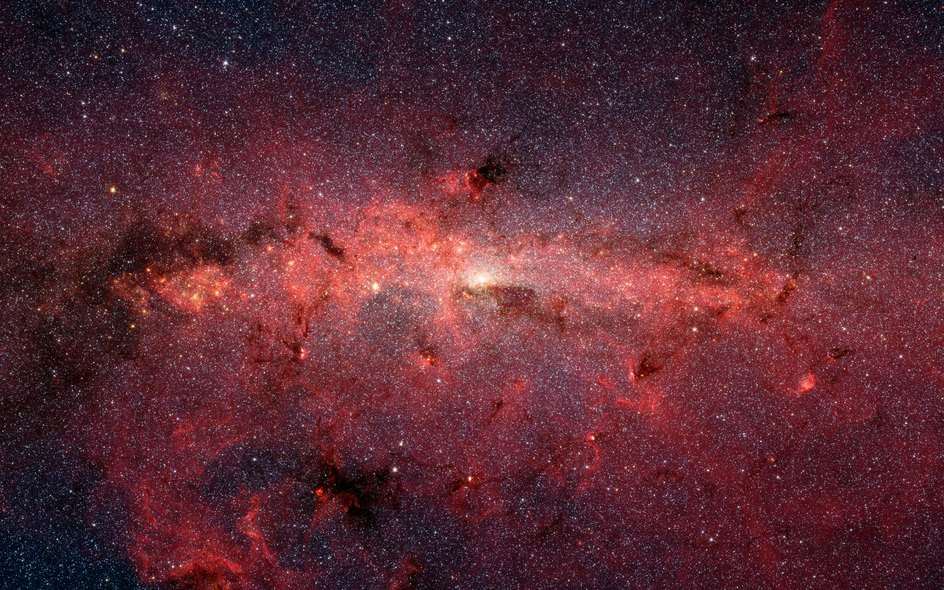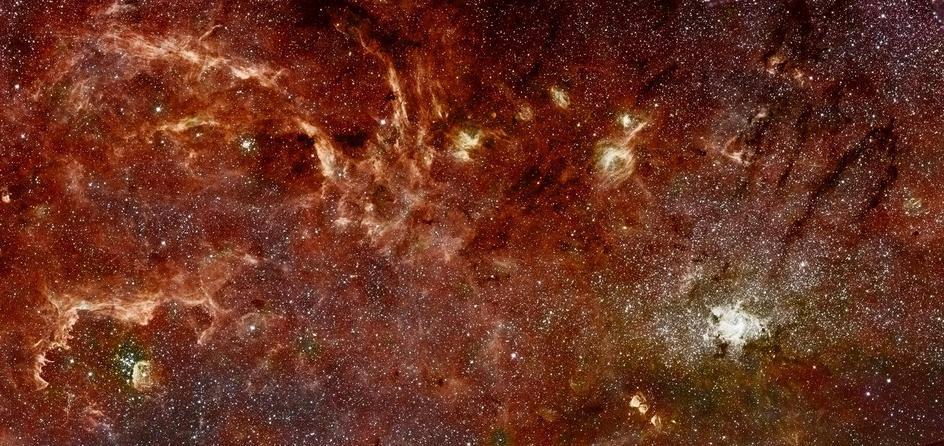
Galactic Core News: It has been confirmed that there are trillions of advanced civilizations in this region of the galaxy alone.
Galactic Core
Galactic Core:
The Galactic Core (GC) is the region of our galaxy between the two opposing (solar system cluster) arms of the Galactic Bar (GB), inside the denser, brighter orb of solar systems, extending out from the Galactic Center Point (GCP) to a distance of roughly 50,000 LY.
The Galactic Core (GC) is the region of our galaxy between the two opposing (solar system cluster) arms of the Galactic Bar (GB), inside the denser, brighter orb of solar systems, extending out from the Galactic Center Point (GCP) to a distance of roughly 50,000 LY.
That makes this section of our galaxy roughly 523,598,775,598,299 cubic-LY, dependent upon the relative orientations and fluctuations of all of the orbital routes of the solar systems that comprise this galactic entity.
That number is derived from the sphere volume formula: [(4/3)πxr^3]
More than half of the solar systems in our Milky Way Galaxy are located in this innermost section, giving it an estimated solar system tally of 100-to-200 billion solar systems, many of them including multiple stars, shared stellar orbits, dozens of planets, and some with even thousands of moons and even more planetoids, nearly one quarter of which are Class M worlds, needing no terraforming at all, and nearly one half of which are colonizable with either minor or standard terraforming, or 'bubble biome constructs'.
Further elaboration to follow...
[Galactic Core Star Systems] Directory
1. _ - Coming Soon
1. _ - Coming Soon
#. Star Trek listing
星系核心





Galactic Core:
(but not quite the center of the core)
Galactic Center:
(the center of the core of the galaxy)
For comparison, here are some details about solar systems on/in the Galactic Fringe:
(but not quite the center of the core)
- While we (the people of Earth and the 34 Tauri system) are in the 'suburbs' of the galaxy, this is the urban/city-proper area.
- Everything is closer together in this galactic region, so there are not L.Y.s between solar systems; just thousands of A.U.s (*Pluto is 39.53 A.U.s from the Sun, while the Oort objects are between 5,000 and 100,000 A.U.s). On average, stars here are only 1,000 AU apart; ~1 Light-Week (as opposed to a Light-Year (LY)). This means that most worlds here have more than 1,000,000 stars in their night skies which are brighter than Sirius, thus their night skies are 200x brighter than the light of the full Moon.
- Solar radiation would still be based on proximity to the star, so sunburns wouldn't be worse, but nocturnal animals would only develop in rare, steep, deep valleys and caves, as it would be day-level bright almost all the time elsewhere, excepting during heavily overcast times such as during seasonal storms like the hurricanes and typhoons of Earth.
- Interstellar empires encompass far more solar systems here due to how much less energy it takes to travel between systems, and that means wars and debris fields (and debris nebulae) are more common here.
- When stars here go nova, it affects more worlds, sometimes setting off sequences of novae like a daisy-chain (linked bombs which function similarly to a chain reaction).
Galactic Center:
(the center of the core of the galaxy)
- This is the 'downtown' / 'inner city' part of our galaxy.
- Stars are only 100 A.U.s apart here; ~2.5x the distance of the Sun to Pluto.
- There is a super-massive black-hole (2.6 million Sol masses) which causes some solar systems and rogue stars to orbit it at extreme speeds; some stars and their solar systems orbit this black-hole like planets and moons would orbit a star, some of them taking only 20 years to make a complete orbit of the black-hole. And this black-hole probably only needs to eat one star every 5,000 years to sustain itself.
- The stellar density near the Galactic center is ~100 stars per cubic parsec (compared to ~1 star per cubic parsec in the stellar neighborhood).
- The night sky on worlds in this central spot of the galaxy would be painfully bright to creatures from Earth, and the stars would visibly move in the sky almost as quickly as airplanes fly on Earth.
For comparison, here are some details about solar systems on/in the Galactic Fringe:
- This is the rural part of the galaxy.
- At the ends of the spiral arms of our galaxy, and in the spaces between them, the night sky would be almost completely blank and pitch black, void of any visible stars except the faintest blurs from the densest parts of the galaxy rising in the sky only for a few hours on nights with no moonlight.
- Nocturnal animals would evolve and dominate with ease here. Eyesight would be less utilized by nature; instead, animals would likely use radar (like bats do), smell (like bears, bees, and wolves do), and infrared/heat sensory organs (like snakes do).
- Astronomy would take millennia longer to develop on worlds here, or to even be thought of in the first place.
- The light of hyper-giants starting to glow in the initial stages of stellar ignition here would be brighter than many stars within their own solar systems out here.
- Travel between systems would take much more energy, thus also take much longer, so civilizations would be much likelier to be isolationistic, xenophobic, and even the cosmic equivalents of uncultured, sheltered, close-minded racists.